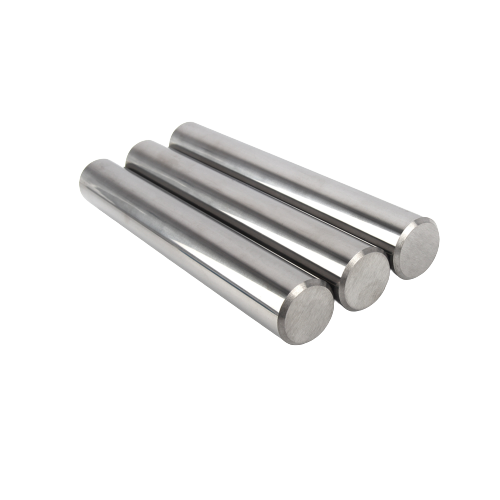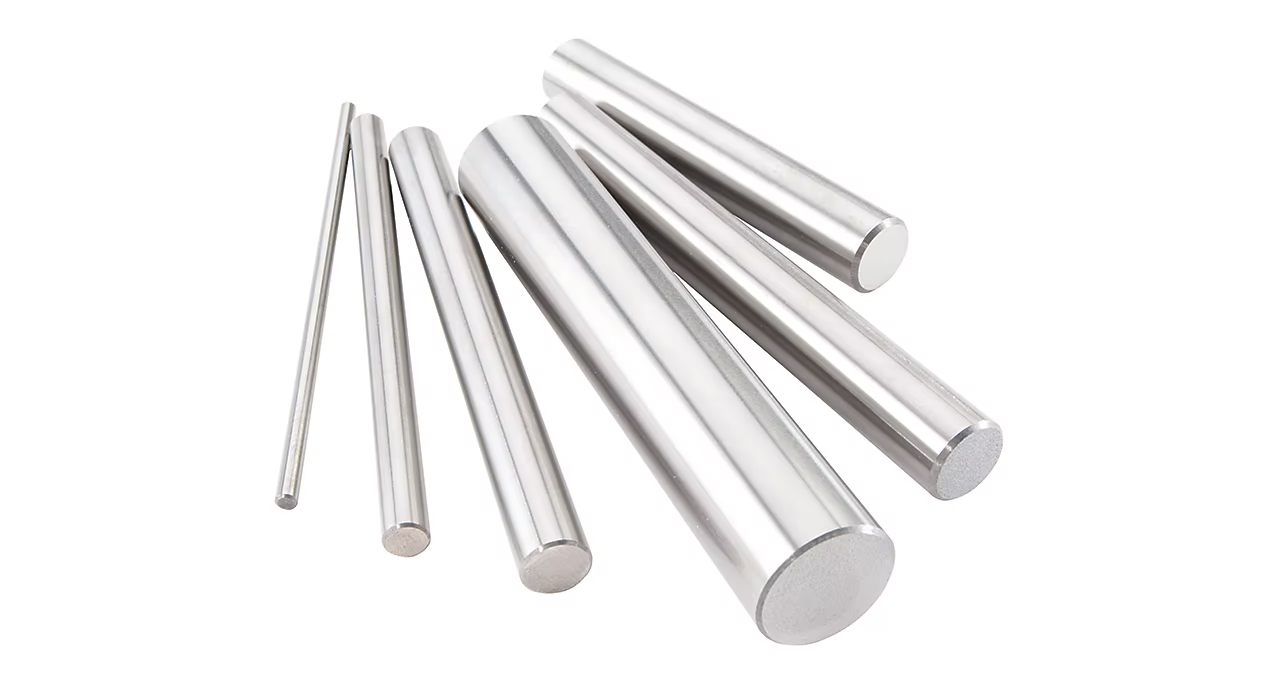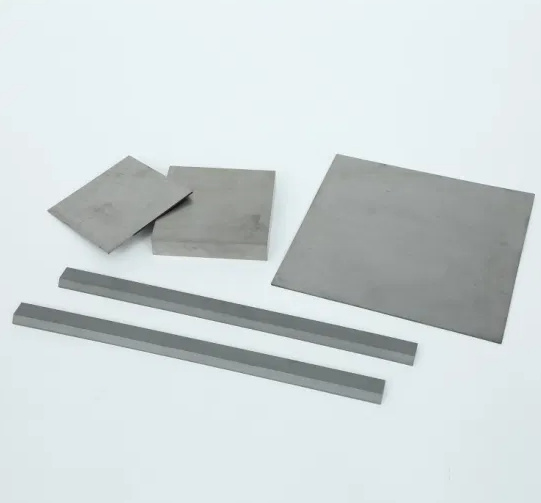Твердосплавные концевые фрезы это невоспетые герои точной обработки, которые режут металл, как горячий нож масло. Если вы когда-нибудь восхищались сложными деталями металлоконструкций, то, скорее всего, твердосплавные концевые фрезы сыграли в них главную роль. Но что делает их такими исключительными? Давайте погрузимся в тонкости твердосплавных концевых фрез, от их состава и типов до применения, производственных процессов и многого другого. Это руководство не только проинформирует вас, но и поможет сделать лучший выбор при выборе этих невероятных инструментов.
Что такое твердосплавные концевые фрезы?
Твердосплавные концевые фрезы - это режущие инструменты, используемые в основном при обработке с ЧПУ (компьютерное числовое управление). Они состоят из карбида вольфрама - соединения, известного своей прочностью и жаростойкостью, - часто в сочетании с кобальтом или другими металлами для повышения производительности. Считайте их скальпелем в мире обработки: точным, острым и незаменимым.
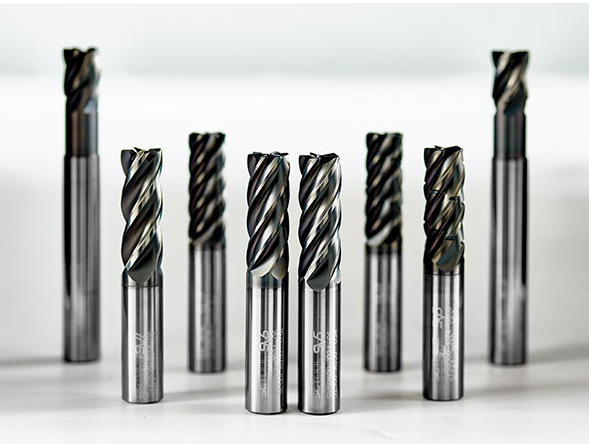
Типы твердосплавных концевых фрез
Вот таблица, в которой приведены основные типы твердосплавных концевых фрез и их уникальное назначение:
| Тип твердосплавной концевой фрезы | Описание | Ключевые примеры использования |
|---|---|---|
| Квадратные концевые фрезы | Плоские концы для острых углов в разрезах. | Пазовая, врезная и профильная резка. |
| Концевые фрезы с шаровым наконечником | Закругленные концы для плавных изгибов и контуров. | Обработка 3D-контуров, изготовление пресс-форм и штампов. |
| Угловые радиусные концевые фрезы | Аналогичны квадратным концевым фрезам, но с закругленными углами. | Повышение прочности при обработке кромок. |
| Концевые фрезы для черновой обработки | Зазубренные режущие кромки для более быстрого удаления материала. | Обработка в тяжелых условиях, большие объемы съема материала. |
| Финишные концевые фрезы | Гладкие режущие кромки для получения изысканной поверхности. | Заключительные проходы для получения высококачественных поверхностей. |
| Конические концевые фрезы | Конические формы для глубоких разрезов и сложных деталей. | Обработка глубоких форм и полостей. |
| Ниточные мельницы | Специализированы для нарезания внутренней резьбы. | Прецизионное нарезание резьбы в твердых материалах. |
| Концевые фрезы с одной флейтой | Одна режущая кромка для максимального удаления стружки. | Мягкие материалы, такие как пластик и алюминий. |
| Многофланцевые концевые фрезы | Несколько режущих кромок для более гладких поверхностей. | Более твердые материалы, требующие точной резки. |
| Концевые фрезы с покрытием | Концевые фрезы с покрытием из таких материалов, как TiAlN или DLC, для повышения долговечности. | Высокоскоростная обработка с повышенным сроком службы инструмента. |
Анализ сырья и состава Твердосплавные концевые фрезы
Твердосплавные концевые фрезы изготавливаются преимущественно из порошка карбида вольфрама - материала, сочетающего в себе прочность и термостойкость. Вот что обычно входит в их состав:
- Порошок карбида вольфрама: Образует основную структуру, обеспечивая твердость и износостойкость.
- Кобальт: Действует как связующее вещество, повышая прочность.
- Карбид титана: Повышает термостойкость.
- Тантал или ниобий: Повышает прочность при высоких температурах.
Благодаря этому уникальному сочетанию твердосплавные концевые фрезы превосходят инструменты из быстрорежущей стали (HSS), особенно в сложных условиях.
Применение твердосплавных концевых фрез
| Промышленность | Конкретные применения |
|---|---|
| Аэрокосмическая промышленность | Резка титановых сплавов для создания легких, но прочных деталей. |
| Автомобильная промышленность | Производство деталей двигателей и прецизионных зубчатых колес. |
| Медицина | Обработка хирургических инструментов и протезов. |
| Электроника | Резка крошечных компонентов для полупроводников и печатных плат. |
| Изготовление пресс-форм и штампов | Изготовление сложных форм и штампов для литья пластмассы и металла. |
| Нефть и газ | Изготовление компонентов для жестких условий эксплуатации и высокого давления. |
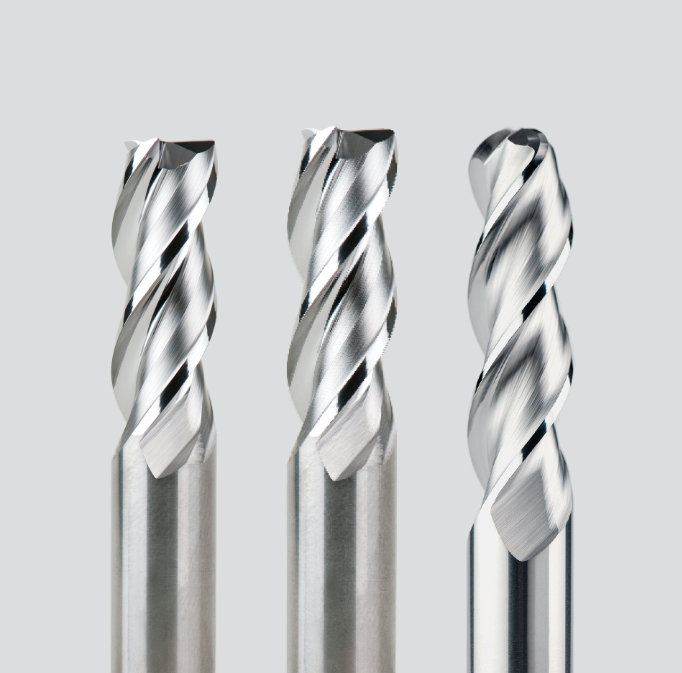
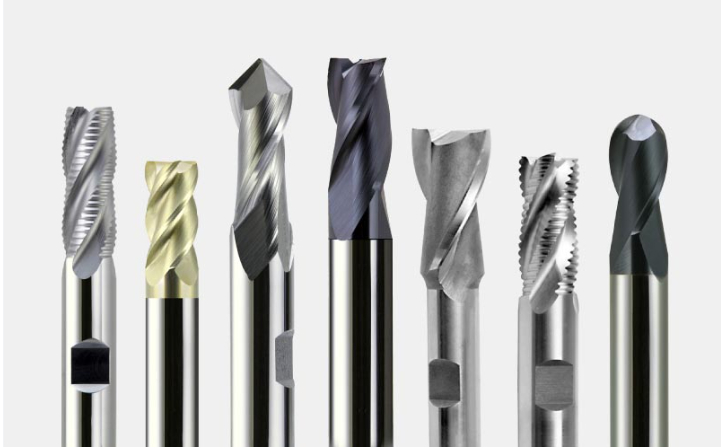
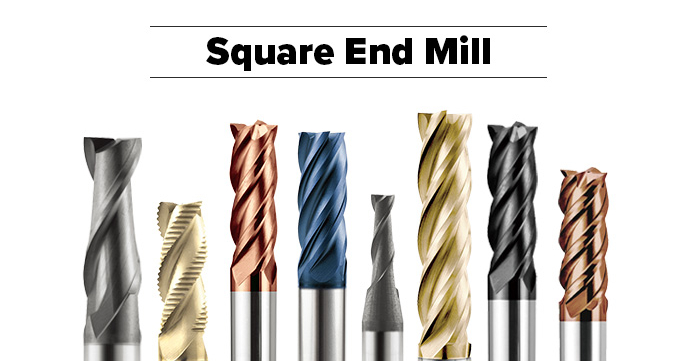
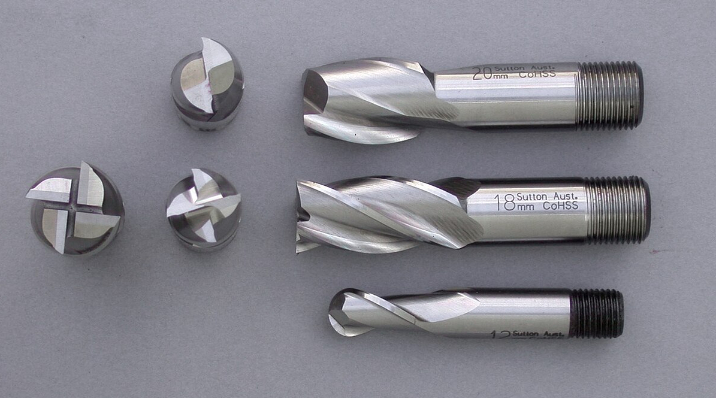

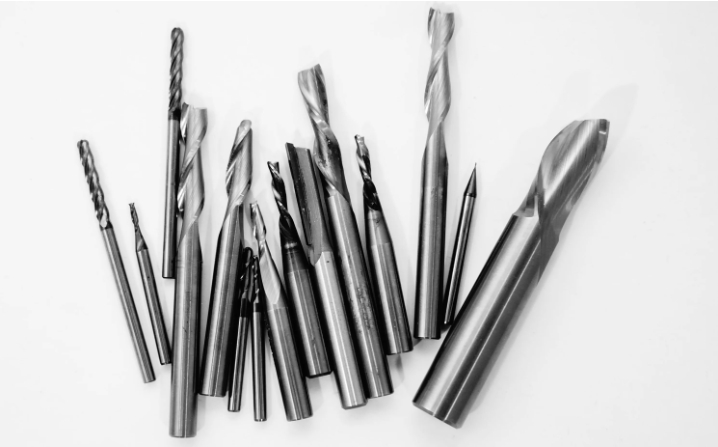
Технологический процесс производства Твердосплавные концевые фрезы
Производство твердосплавных концевых фрез включает в себя несколько тщательных этапов:
- Смешивание порошков: Карбид вольфрама и другие элементы смешиваются.
- Уплотнение: Смесь спрессовывается в желаемые формы.
- Агломерация: Высокотемпературная обработка сплавляет материалы.
- Резка и формовка: Сырые заготовки шлифуются до точных форм.
- Покрытие (Дополнительно): Нанесение специализированных покрытий для улучшения эксплуатационных характеристик.
Свойства материалов твердосплавных концевых фрез
| Недвижимость | Описание |
|---|---|
| Твердость | Исключительная твердость, обеспечивающая длительный срок службы инструмента даже при высоких нагрузках. |
| Термическое сопротивление | Выдерживает высокие температуры при интенсивных процессах обработки. |
| Износостойкость | Обеспечивает исключительную прочность, уменьшая износ. |
| Прочность | Высокая прочность на сжатие для резки прочных материалов, таких как сталь и титан. |
Состав, свойства и характеристики
| Компонент | Роль | Характеристики |
|---|---|---|
| Карбид вольфрама | Основной ингредиент | Твердость, износостойкость. |
| Кобальтовый переплет | Усилитель прочности | Повышает упругость и уменьшает хрупкость. |
| Титановые добавки | Усилитель термической стабильности | Позволяет повысить скорость обработки. |
Твердость, прочность и износостойкость
| Метрика | Значение | Значение |
|---|---|---|
| Твердость (HRC) | 89-93 | Сохраняет острые края под нагрузкой. |
| Прочность на сжатие | 3000 МПа | Выдерживает большие нагрузки без деформации. |
| Износостойкость | Высокая | Продлевает срок службы, снижая необходимость замены. |
Технические характеристики, размеры, формы и стандарты
| Спецификация | Доступный диапазон | Примечания |
|---|---|---|
| Диаметр | 0,1 мм - 20 мм | Подходит как для тонкой, так и для тяжелой обработки. |
| Длина | 20 мм - 150 мм | Варьируется в зависимости от требований к глубине. |
| Тип хвостовика | Прямые, конические | Обеспечивает совместимость с различными настройками оборудования. |
| Флейта | 1 - 12 | С учетом требований к материалам и отделке. |
Выбор подходящих твердосплавных концевых фрез
| Критерии | Соображения |
|---|---|
| Разрезаемый материал | Подберите твердость концевой фрезы в соответствии с материалом. |
| Тип покрытия | TiAlN - для нагрева, DLC - для смазки. |
| Дизайн флейты | Однофланцевые для пластмасс; многофланцевые для стали. |
| Скорость резки | Для более высоких скоростей требуются инструменты с покрытием. |
| Бюджет | Сбалансируйте стоимость и производительность. |
Преимущества и ограничения Твердосплавные концевые фрезы
| Преимущества | Ограничения |
|---|---|
| Исключительная долговечность | Более высокая первоначальная стоимость по сравнению с инструментами из быстрорежущей стали. |
| Тепло- и износостойкость | Хрупкий при неправильном использовании. |
| Универсальность для различных применений | Требуется специальное оборудование для заточки. |

Поставщики и ценовая политика
| Поставщик | Диапазон цен | Основные характеристики |
|---|---|---|
| Kennametal | $50 – $300 | Высококачественные покрытия, разнообразный ассортимент. |
| Инструменты Seco | $60 – $400 | Специализируется на аэрокосмической и автомобильной промышленности. |
| Sandvik | $70 – $350 | Исключительная производительность при высокоскоростной обработке. |
Вопросы и ответы
| Вопрос | Ответить |
|---|---|
| Почему стоит выбирать инструменты из твердого сплава, а не из быстрорежущей стали? | Твердосплавные инструменты служат дольше, работают на более высоких скоростях и более устойчивы к износу. |
| Можно ли использовать твердосплавные концевые фрезы по дереву? | Да, но это излишество; инструменты из быстрорежущей стали отлично подходят для работы с деревом. |
| Какие покрытия лучше всего подходят для высоких температур? | TiAlN и AlCrN отлично подходят для теплоемких применений. |
| Стоит ли использовать концевые фрезы с покрытием? | Безусловно, особенно для высокоскоростной или абразивной обработки материалов. |

